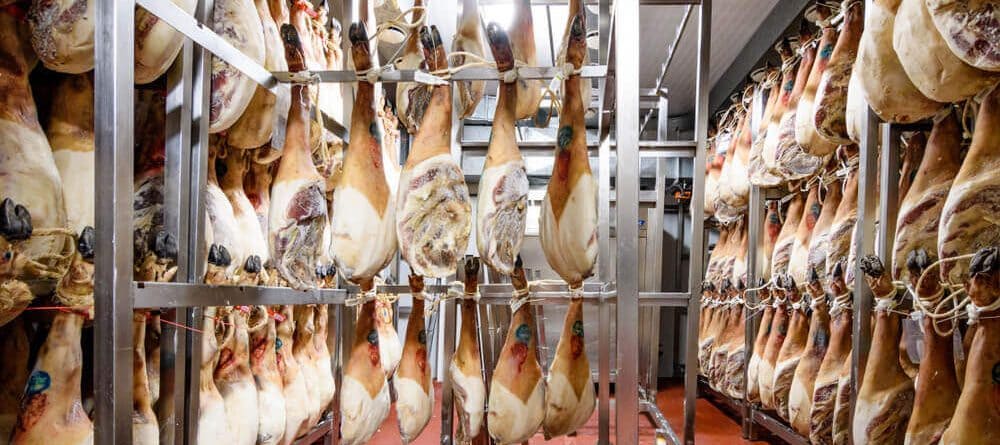Low-charge ammonia refrigeration to increase the reliability of ham curing processes.
INTARCON2022-10-03T09:18:52+02:00The advancement of low ammonia charge technology for safer, more reliable and efficient installations in the meat industry.
La Bodega Barcience
La Bodega de Barcience of Eulogio Ramos S.A. has switched to low-ammonia refrigeration to increase the reliability of the ham curing process in its drying sheds. Recently, this industry in Toledo, which had been suffering from constant interruptions in the operation of its conventional refrigeration installation, has opted for the replacement of the refrigeration plants with low charge ammonia systems.
Specifically, the dryer facilities have been equipped with NH3 ammolite chiller with a 200 hp semi-hermetic screw compressor, by the installation company Fricaman S.L.
Fernando García, Ammolite’s production manager, highlighted how the heat wave in the middle of July provided extreme conditions for testing the new chiller. Therefore, demonstrating its reliability under ambient temperatures of 42ºC, with dry air condensation without any water consumption.
This ammonia technology not only provides high operational reliability, but also eliminates water consumption in the cooling towers and risks to the continuity of production associated with possible legionella contamination of the cooling towers.
No less important is the environmental sustainability of the technology. Ammonia, as a natural refrigerant, is part of the natural environmental cycle and has no greenhouse or global warming effect. However, a possible leakage of ammonia from a refrigeration chiller represents a chemical hazard for the surrounding environment and for the safety of workers. It is for this reason that low ammonia charge is advancing worldwide as the most promising technology in industrial refrigeration from an environmental point of view.
Advantages of low ammonia charge
Low ammonia charge technologies achieve a reduction in the refrigerant quantity by of 70 % to produce the same refrigeration effect. In other words, if a conventional refrigeration plant in a dryer contains 2 or 3 tonnes of ammonia, the low amomonia charge technology would use less than 50 kg – numerous international regulations (ADR, EPA, etc.) establish this value as the danger limit.
Finally, if we consider the life cycle cost criterion for the choice of the best system for a refrigeration installation , we find that the low ammonia charge system is often in first position. Not only does energy efficiency reduce operating costs, but the absence of water consumption often represents a not inconsiderable economic saving, which, together with the drastic reductions in maintenance costs, amply compensates for the lower C.O.P. of the indirect system as compared to conventional ammonia systems with a high ammonia charge and its presence in the dryers and production areas.





